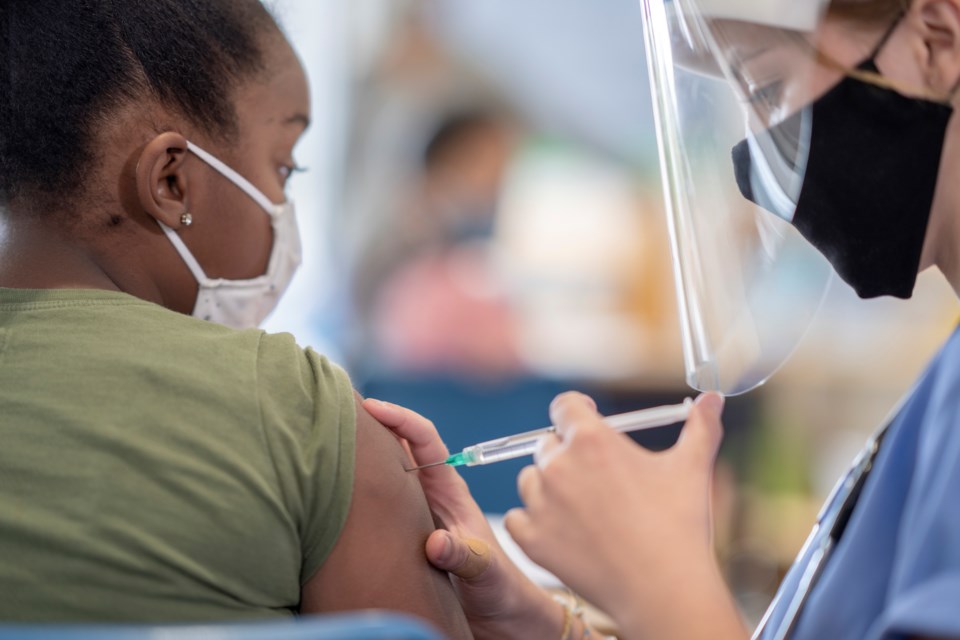In 2021, conversations began on whether the COVID-19 pandemic will, or even can, end. As a literary and cultural theorist, I started looking for shifts in stories about pandemics and contagion. It turns out that several stories also question how and when a pandemic becomes endemic.
The 2020 film Peninsula, a sequel to the Korean zombie film, Train to Busan, ends with a group of survivors rescued and transported to a zombie-free Hong Kong. In it, Jooni (played by Re Lee) spent her formative years living through the zombie epidemic. When she is rescued, she responds to being informed that she’s “going to a better place” by admitting that “this place wasn’t bad either.”
Jooni’s response points toward the shift in contagion narratives that has emerged since the spread of COVID-19. This shift marks a rejection of the push-for-survival narratives in favour of something more indicative of an endemic.
Found within
Contagion follows a general cycle: outbreak, epidemic, pandemic and endemic. The determinants of each stage rely upon the rate of spread within a specified geographic region.
Etymologically, the word “endemic” has its origins with the Greek words én and dēmos, meaning “in the people.” Thus, it refers to something that is regularly found within a population.
Infectious disease physician Stephen Parodi asserts that an endemic just means that a disease, while still prevalent within a population, no longer disrupts our daily lives.
Similarly, genomics and viral evolution researcher Aris Katzourakis argues that endemics occur when infection rates are static — neither rising nor falling. Because this stasis occurs differently with each situation, there is no set threshold at which a pandemic becomes endemic.
Not all diseases reach endemic status. And, if endemic status is reached, it does not mean the virus is gone, but rather that things have become “normal.”
Survival narratives
We’re most likely familiar with contagion narratives. After all, Steven Soderbergh’s 2011 film Contagion, was the most watched film on Canadian Netflix in March 2020. Conveniently, this was when most Canadian provinces went into lockdown during the early stages of the COVID-19 pandemic.
In survival-based contagion narratives, characters often discuss methods for survival and generally refer to themselves as survivors. Contagion chronicles the transmission of a deadly virus that is brought from Hong Kong to the United States. In response, the U.S. Centers for Disease Control is tasked with tracing its origins and finding a cure. The film follows Mitch Emhoff (Matt Damon), who is immune, as he tries to keep his daughter safe in a crumbling Minneapolis.
Ultimately, a vaccine is successfully synthesized, but only after millions have succumbed to the virus.
Like many science fiction and horror films that envision some sort of apocalyptic end, Contagion focuses on the basic requirements for survival: shelter, food, water and medicine.
However, it also deals with the breakdown of government systems and the violence that accompanies it.
A “new” normal
In contrast, contagion narratives that have turned endemic take place many years after the initial outbreak. In these stories, the infected population is regularly present, but the remaining uninfected population isn’t regularly infected.
A spin-off to the zombie series The Walking Dead takes place a decade after the initial outbreak. In the two seasons of The Walking Dead: World Beyond (2020-2021) four young protagonists — Hope (Alexa Mansour), Iris (Aliyah Royale), Silas (Hal Cumpston) and Elton (Nicolas Cantu) — represent the first generation to come of age within the zombie-infested world.
The four youth spent their formative years in an infected world — similar to Jooni in Peninsula. For these characters, zombies are part of their daily lives, and their constant presence is normalized.
The setting in World Beyond has electricity, helicopters and modern medicine. Characters in endemic narratives have regular access to shelter, food, water and medicine, so they don’t need to resort to violence over limited resources. And notably, they also don’t often refer to themselves as survivors.
Endemic narratives acknowledge that existing within an infected space alongside a virus is not necessarily a bad thing, and that not all inhabitants within infected spaces desire to leave. It is rare in endemic narratives for a character to become infected.
Instead of going out on zombie-killing expeditions in the manner that occurs frequently in the other Walking Dead stories, the characters in World Beyond generally leave the zombies alone. They mark the zombies with different colours of spray-paint to chronicle what they call “migration patterns.”
The zombies have therefore just become another species for the characters to live alongside — something more endemic.
The Walking Dead, Fear the Walking Dead (2015-), Z Nation (2014-18), and many other survival-based stories seem to return to the past. In contrast, endemic narratives maintain a present and sometimes even future-looking approach.
Learning from stories
According to film producer and media professor Mick Broderick, survival stories maintain a status quo. They seek a “nostalgically yearned-for less-complex existence.” It provides solace to imagine an earlier, simpler time when living through a pandemic.
However, the shift from survival to endemic in contagion narratives provides us with many important possibilities. The one I think is quite relevant right now is that it presents us with a way of living with contagion. After all, watching these characters survive a pandemic helps us imagine that we can too.
![]()
Krista Collier-Jarvis does not work for, consult, own shares in or receive funding from any company or organisation that would benefit from this article, and has disclosed no relevant affiliations beyond their academic appointment.



